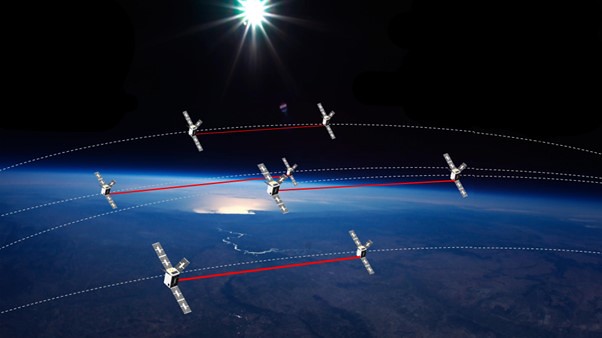The University of Bath is part of the project, ‘Revealing the Orbital and Atmospheric Responses to Solar activity’ (ROARS), announced today during World Space Week (4-10 October).
Space debris poses a huge problem for global communication systems and space exploration. Over 27,000 pieces of orbital debris are actively tracked by the Space Surveillance Network, while more than 170 million smaller pieces that cannot be tracked also pose catastrophic collision risks. These tiny items of space junk, often created by exploding or colliding decommissioned rockets, can carry as much energy as grenades and bullets and tear through spacecraft causing extensive damage.
This poses immense problems to satellite operators and lethal dangers to astronauts and equipment, driving up launch costs through requirements for thick shielding and, increasingly, having to program collision avoidance manoeuvres. Space debris also presents a barrier for emerging space-faring nations who cannot afford these mitigation strategies.
Now the 26 institution-strong consortium across nine countries, led by a core team from the Universities of Bath, Warwick, Birmingham, UCL, Northumbria and Stuttgart, alongside industrial partner, OpenCosmos, will attempt to tackle the problem.
The team are examining how a swarm of small satellites known as CubeSats, each about the size of a washing machine, could fly in Low Earth Orbit (LEO) just 500km above the Earth. They hope a swarm could provide the “missing” set of measurements necessary to accurately predict satellite and debris collisions at an orbit height which is seeing exponential growth in satellite mega-constellations.
The concept is that by using a satellite network of small spacecraft containing scientific instruments, the “swarm” would possess observational capabilities far beyond a standard large satellite.
Crucially the swarm would be designed to perform collision avoidance manoeuvres and safely deorbit within five years at the end of life, so it wouldn’t contribute to the very problem it is trying to address.
Dr Robert Watson, from the University of Bath’s Department of Electronic & Electrical Engineering and Bath lead on the project, said: “ROARS is an exciting project that will develop the next-generation of space weather satellites. The novelty of having multiple coincident measurements from a satellite swarm will lead to improved space situational awareness in a congested space environment. Bath's unique blend of space science and technology expertise will bring new engineers and scientists together to support the ROARS team and make this a success.”
Co-investigator Professor Cathryn Mitchell, Royal Society Industry Fellow, added: "Space weather, the effects of the Sun on our planet, is a critically important topic for the sustainability of our technology. This mission will help us to understand and hence to mitigate the detrimental effects of space weather."
The multiple satellites feature a dizzying array of new technologies, enabled by rapid advances in electronics miniaturisation. These include the latest atmospheric and magnetic field sensors, state-of-the art global navigation satellite systems (including GPS), satellite tracking and laser communications. A further key mission component is supporting radar, laser and optical observations from the ground.
In particular the team will investigate how “satellite drag” from the Earth’s upper atmosphere; a force on near-Earth orbiting satellites, is modulated by solar activity and space weather. When solar storms interact with the Earth’s magnetosphere they are responsible for the impressive Northern and Southern Lights, but can also heat our upper atmosphere and play havoc with spacecraft trajectories.
In February 2022, 40 Starlink satellites were lost, due to the effects of successive solar storms which caused a large atmospheric expansion and increased atmospheric drag, ultimately causing the satellites to burn up in the upper atmosphere.
Dr Ravindra Desai, of University of Warwick’s Centre for Fusion, Space & Astrophysics and Principal Investigator for the mission, said: “This interdisciplinary mission concept seeks to comprehensively understand how space weather deposits energy and heats our upper atmosphere, and how this perturbs satellite orbits and increases collision risk.
“We hope this will provide a step change in our ability to safely use our space environment and enable ESA’s Terrae Novae vision to provide Low Earth Orbit as a safe haven for further exploration of the moon and Mars.”
ESA released the €100M campaign for Innovative Mission Concepts Enabled by Swarms of CubeSats at the start of this year and received 74 submissions, from which seven were selected for funding.

